If you start spotting unfamiliar Marriott signs on older roadside hotels — grey façades, bright yellow bands, and navy accents — you’re seeing the new City Express by Marriott. It’s Marriott’s new mid-scale workhorse: fewer frills, faster check-in, and design meant to reuse as much of the existing building as possible.
So far (4) properties in the brand have spread to North America:
- Duluth, GA: a former La Quinta
- New Orleans: former Wyndham Garden
- Manhattan Beach: former Best Western Plus
- Santa Ana: former Hampton Inn (most recently independent as the “Express Inn” as it transitioned from Hilton to Marriott)
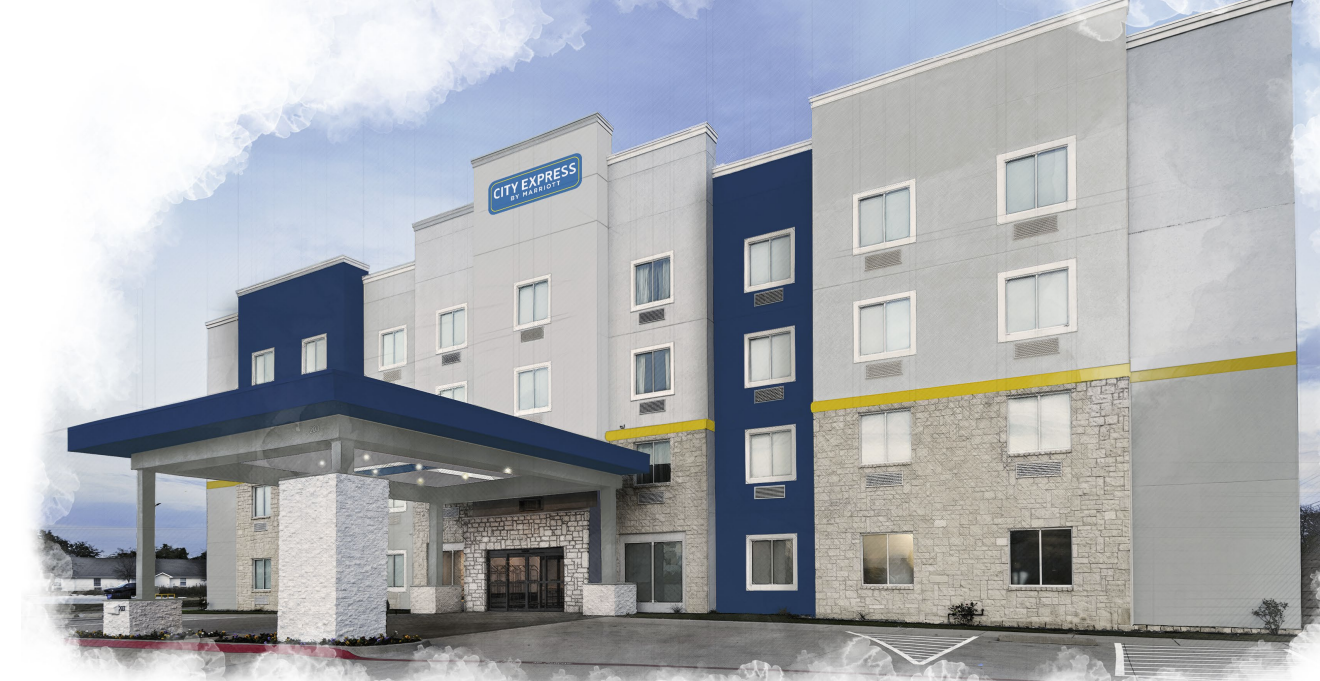
Have you ever seen towels in a chain hotel bathroom that weren’t white before? Just keep using what you have seems to be the City Express motto.
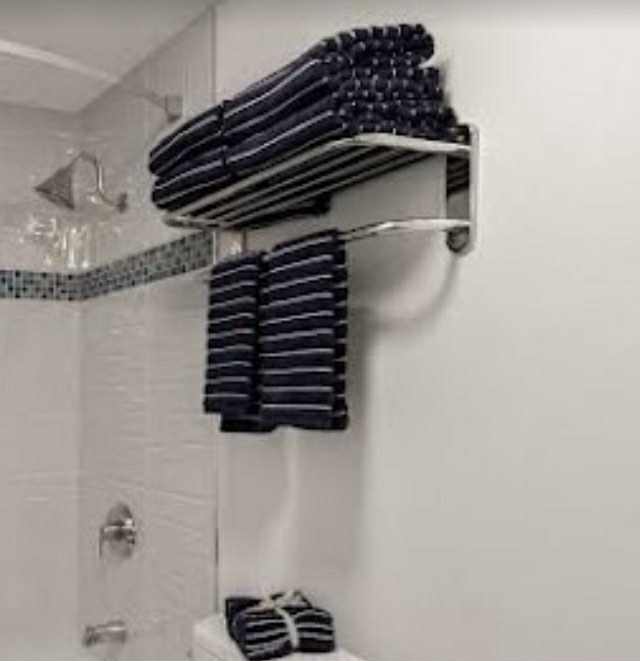
Marriott describes City Express as a “break for the on-the-go guest” — a stopover brand for travelers who want comfort, connectivity, and predictability at a reasonable rate. In some sense it’s another Fairfield Inn, streamlined for lower costs and quick conversions.
- Every conversion gets the same minimalist exterior formula: two shades of grey paint, an 18-inch yellow band, and a navy block framing the new sign. The underlying structure stays untouched—so it’s often the same hotel you drove past before, just repainted and re-signed.
- Expect bright lobies with casual furniture—woven rugs, round ottomans, modular sofas, and a wall panel displaying the Marriott Bonvoy logo. It’s open plan, designed so breakfast, lounging, and laptop work all happen in the same space.
- As with many lower-end chains, breakfast is a brand standard. The buffet counter must be at least 16 feet long with a four-foot-wide coffee station, and each hotel must provide a bean-to-brew self-serve coffee machine available 24/7.
- Every property needs a retail corner with a fridge, freezer, microwave, and self-service shelves. There’s no checkout counter, no POS terminal, and no wine display and no alcohol in the market. Expect grab-and-go snacks and microwave meals, not bar service.
| Included | Restricted |
|---|---|
| Free breakfast | Bars prohibited |
| Free parking | Restaurants only if separated from lobby |
| Pet-friendly rooms | Meeting rooms capped ≤ 1,000 sq ft |
| Fitness center (≥ 350 sq ft) | No business center; printing only at front desk |
| RFID/Bluetooth mobile key | Full kitchens banned; kitchenettes limited to 10% of rooms |
Fitness rooms only have to be 350 square feet and offer three cardio machines and free weights. Hydration stations are optional but “highly recommended.” Bars are forbidden. Business centers are discouraged.
Guest rooms keep a neutral palette of white, grey, and oak, with yellow or orange accents for “optimism.” You’ll find at least a 50-inch TV, a desk with built-in power at both sides of the bed, and a small armchair or ottoman
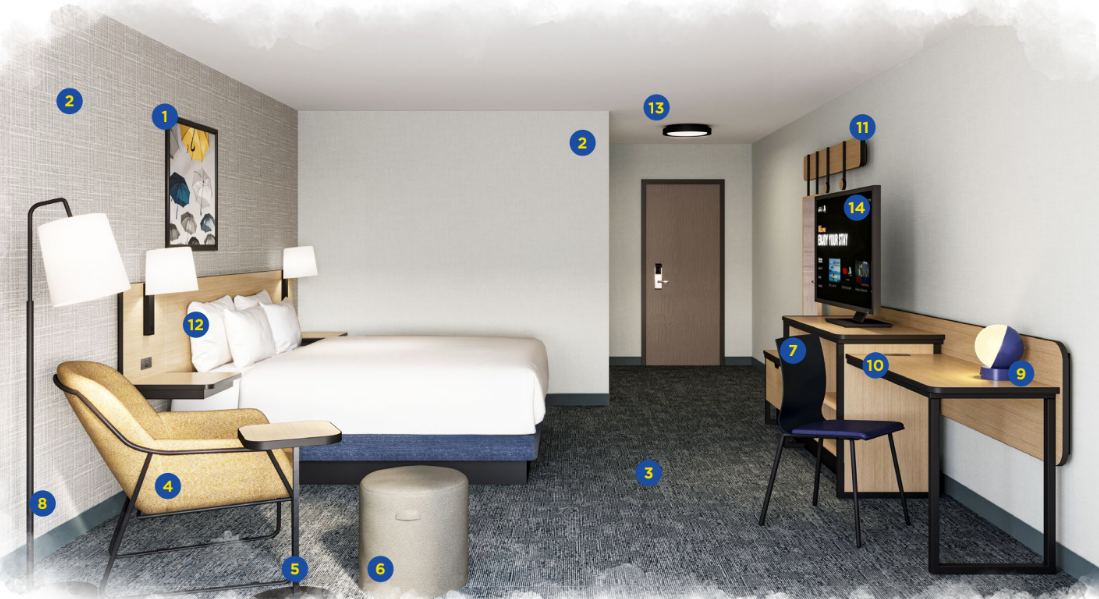
Microwave and mini-fridge are optional, even though the furniture is designed to accommodate them. Bathrooms vary more. Older tubs can stay in a conversion.
These are “paint-and-signage” conversions. Most owners reuse existing architecture and even many furnishings. Marriott stresses to owners minimal construction changes are needed to become a City Express.
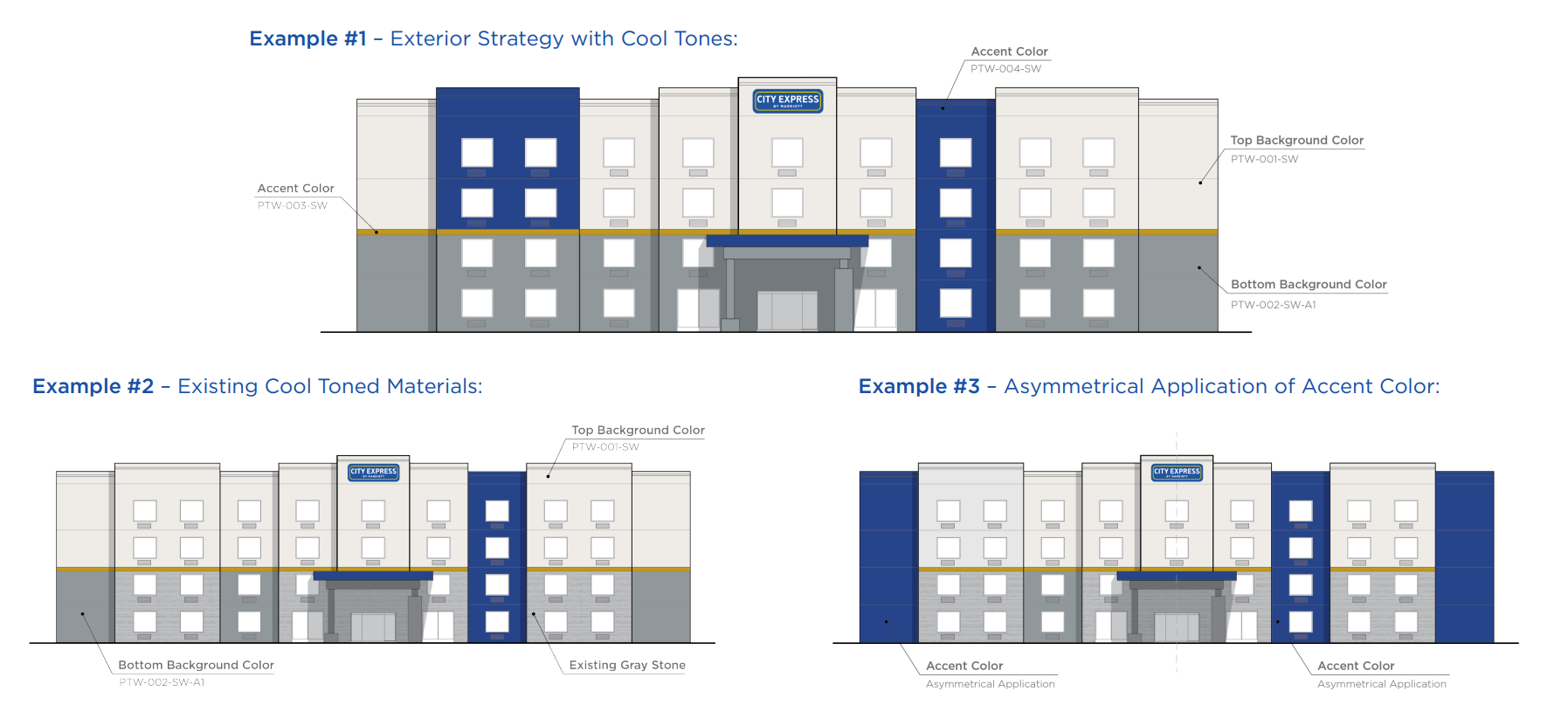
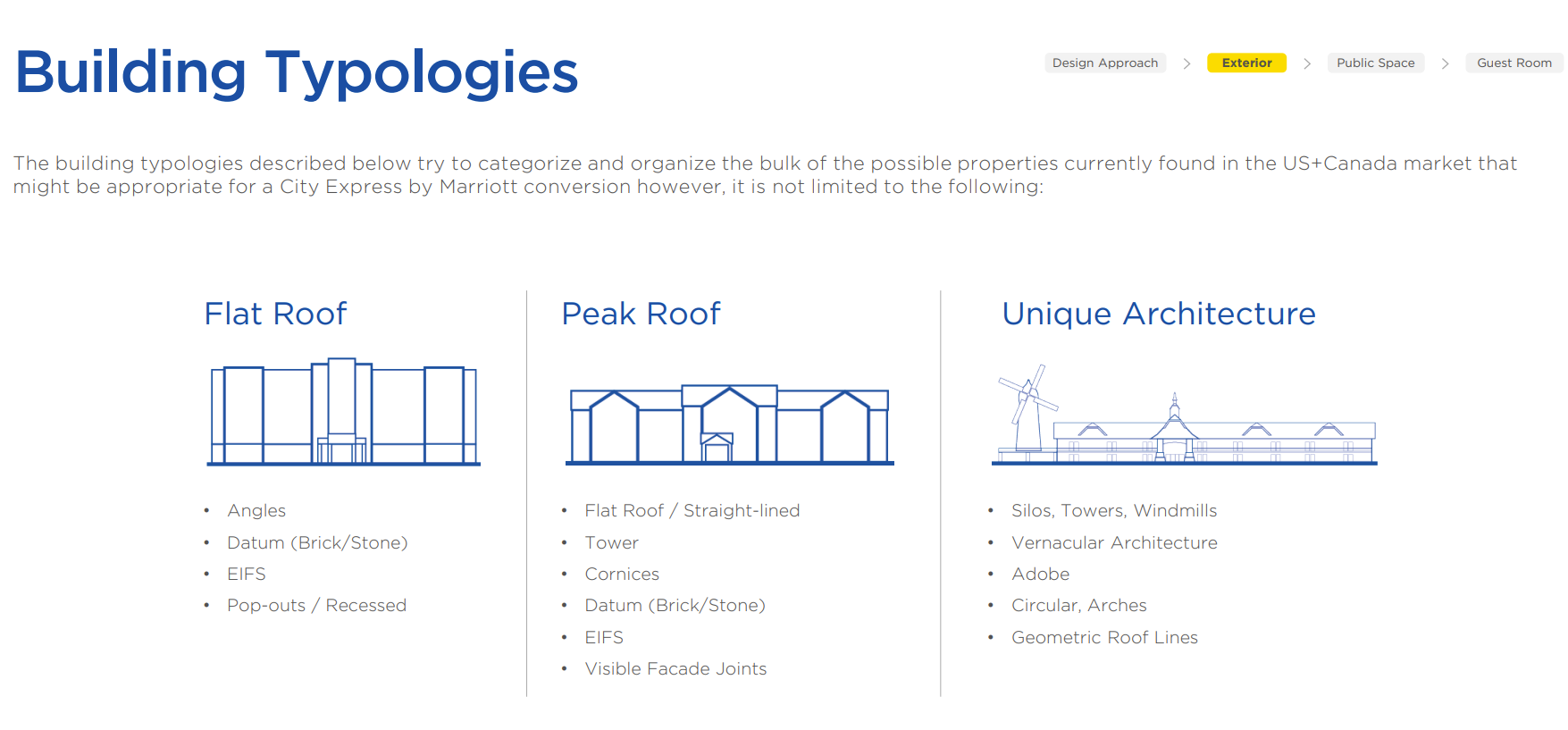
City Express by Marriott is meant to feel new without being new. It’s a guaranteed breakfast, free parking, and points-earning at a lower nightly rate — and Marriott doesn’t generate enough revenue from these stays, so they’re unwilling to provide a full elite night credit per night stayed.
I hadn’t paid much attention to City Express before, but reviewed their documentation for converting existing hotels. Owners get to keep many existing finishes that are still within useful life, with exterior identity achieved largely with two‑tone grays, a 12–18″ yellow band, and asymmetrical navy blocks, plus new signage and entry‑door graphics. Restaurants are not allowed unless physically separated from public space. Full kitchens are not allowed. Any existing kitchenettes (cooktop and dishwasher) are allowed in fewer than 10% of rooms only if already present, and replacing equipment isn’t allowed as they go bad.


Getting only 1 night credit per two nights (or 0.5 per night) means I’ll never stay again. Stayed once, had issues but won’t go into that here. Price is the same as other hotels that give full credit per night, so why bother?
Marriott has these restrictions like no bar because it wants to keep existing Courtyard owners and owners of Four Points happy. Even some Fairfields have a bar. They don’t want suites with kitchens because owners of Towneplaces will be furious.
Let’s be clear. This is pure desperation on the part of Marriott. Income from nicer hotels must really be drying up.
Ah, slapping on a fresh coat of paint. ‘The slumlord special.’ Avoid.
And yes I have seen non-white towels in a hotel. The former LeMeridien in NYC had orange towels.
I am sure Ben wouldn’t be caught dead staying at one. There aren’t any suites available. Heck he wont even review the motel6 in Parker AZ
@controller1 — “non-white”… *weewooweewoo* …oh, he’s talkin’ towels. All clear!
“Now gentlemen, if you care to join me in the parlor, we will be serving hhhhwhite cake…” — Calvin Candie
I understand the inclusions – breakfast and parking as brand standards. But what is the motivation behind the exclusions? Why does Marriott care if they have a bar or restaurant?